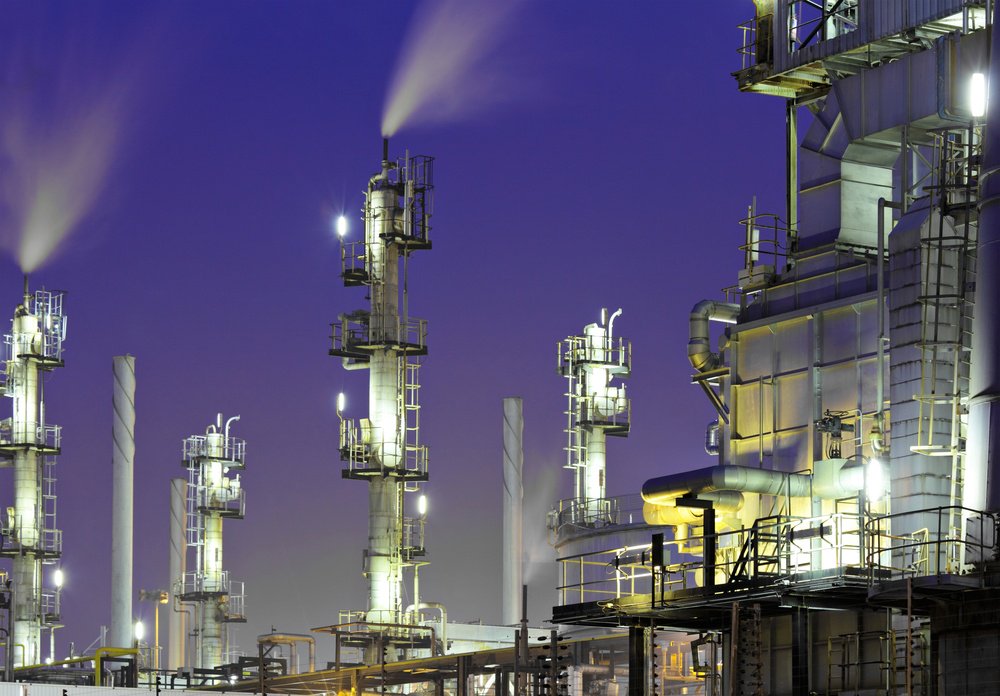After a decade of unprecedented growth and seemingly endless investments, the writing is now on the wall: the Great American Shale Boom is slowing down and this could have some grave consequences both the industry and the financial markets.
A total of 32 oil and gas drillers have filed for bankruptcy through the third quarter, with the total number of bankruptcy filings since 2015 now clocking in at more than 200.

Oil refinery plant at night
Unlike Phase 1 of the oil bust that featured shale production declining due to an epic global price collapse, the current slowdown is being driven partly by industry-wide core operational issues, including declining production due to wells being drilled too close to one another as well as production sweet spots running out too soon.
Yet, the most important underlying theme precipitating the collapse is a growing financial squeeze as banks and investors pull in the reins and demand that shale drillers prioritize profitability over production growth.
The shale industry has been built on mountains of debt and the day of reckoning is finally here.
As many company executives who hoped to drill their way out of debt are belatedly discovering, trying to squeeze a profit from shale-fracking operations is akin to trying to draw blood from stone with the industry having racked up cumulative losses estimated at more than a quarter of a trillion dollars.
From the Permian of the Southwest to the Eagle Ford in Texas and the Bakken of central North America, the future is looking decidedly bleak for shale companies that racked up the most debt and expanded too aggressively.
Read more: Oil Price




